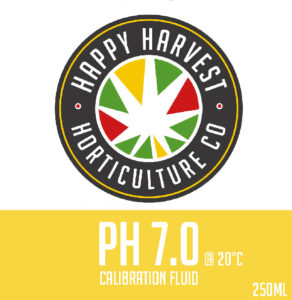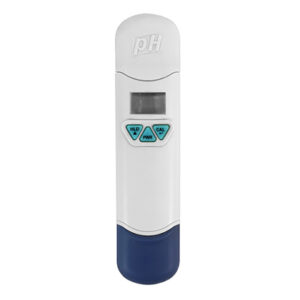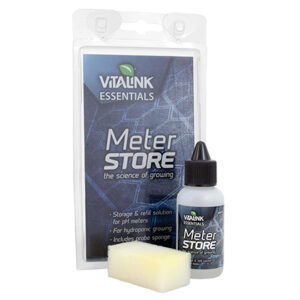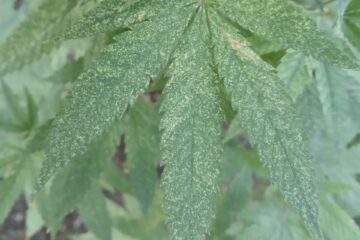Deficiency or pH problem?
Growers at some stage will have nutrient deficiencies of some kind. Deficiencies occur when some macro or micro nutrients aren’t available for the plant. In most cases due to pH. Problems can also be caused by salt build ups. This is because extra nutrients would cause pH to drop in the root zone. That’s why it’s key to know how to calibrate a pH meter regularly.
Say you’re mixing a nutrient solution and adjusting that solution to a pH of 6.2. You could easily be feeding outside of the needed pH range if your meter was out by 0.4.
pH Calibration Fluid 4.0(Opens in a new browser tab)
Flushing with pH corrected solution or water will often fix these problems. As long as your pH meter is accurate. It’s crucial to calibrate meters regularly for accuracy, depending on which kind you have. The good meters can go up to a month and not be that far off when calibrated again. Calibrate cheaper meters before every use just to be sure.
pH Calibration 7.0(Opens in a new browser tab)
Which pH calibration fluid to use for your meter?
Get the calibration fluid that’s closest to the pH you work at. Hydro growers correcting solution to a pH of 5.5 for example would calibrate to 4.0. Organic growers correcting water to 6.0 would calibrate their pH meter to 7.0
2 point calibration is possible with high end meters. This enables meters to be more accurate across the linear equation. Calibrate the meter to 2 points, 4.0 and 7.0 with the respective calibration fluid.
Bluelab Care Kit pH(Opens in a new browser tab)
How to calibrate your pH meter
Time needed: 10 minutes
Tools needed – small container or cup, calibration fluid
- Rinse pH meter
Rinse your pH meter in clean water. Distilled water can be used but don’t soak the meter in it.
- Fill container with calibration fluid
The container can be a small glass, adding just enough fluid to submerge the pH probe. Don’t use any metals.
- Soak pH probe
Let the pH meter stand in the solution for around 5-10 minutes.
- Activate calibration
While still submerged in the calibration fluid, press the CAL button on your meter.
- Select pH value
Most meters can tell what value solution the probe is in. Make sure the meter shows the pH value you want to calibrate to. For example 4.0 or 7.0. Your meter may do this automatically.
- Calibrate
Once a pH value has been selected, press enter and allow the meter to calibrate. The meter will show “END” or similar when it’s done.
- Rinse and store
Lightly rinse the meter in fresh tap water and place the cap on. pH meter probes should be stored wet. If you have storage solution, place some on the sponge inside the cap.
Manual pH Meter Calibration
If your meter needs manual calibration, it would have come with a screw driver. Somewhere on the meter, often in the battery bay, there is a small screw. Submerge the pH meter’s probe into the calibration fluid. Using the screw driver turn the screw slowly so that the reading on the meter matches the pH calibration fluid’s value, 4.0 or 7.0 for example. Learning how to calibrate a pH meter is crucial for accurate readings.
Do not throw the used calibration fluid back into the bottle!
Close the calibration fluid bottle tightly, it will remain accurate for up to 8 weeks after opening. Replace your calibration fluid every 2-3 months. You can purchase both pH meters and calibration fluid here
Storing Your pH Meter
By storing a pH meter correctly, you’ll make sure it lasts and get your money’s worth. Made from glass, probes contain fluid inside which must not dry out. By placing a sponge in the meter’s cap with a few drops of storage solution, your probe will be sound. Simply rinse your meter before and after use and then replace the cap. Knowing how to store your pH meter after calibration is equally important.






0 Comments